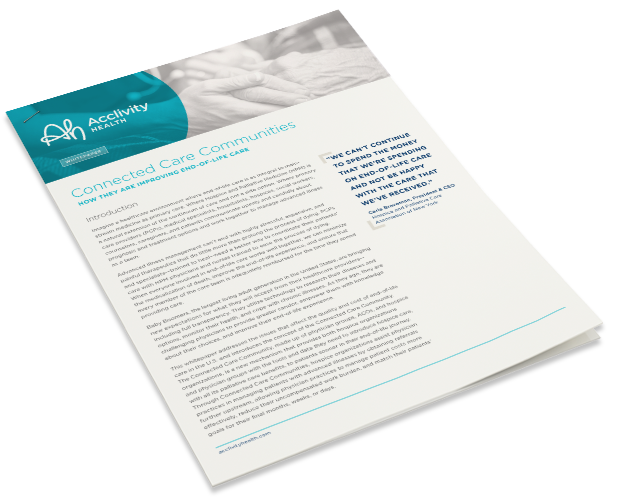Less than 40 years ago, when you went to the Emergency Room at your local hospital, you had no idea what kind of doctor you’d see. Staff physicians in the hospital took shifts in the ER, so you might have an obstetrician casting your broken wrist or a psychiatrist treating your heart palpitations. Beginning in 1979, Emergency Medicine was recognized by the American Board of Specialties. Over the next decades, EM specialists became thoroughly integrated into the continuum of care, so that today, patients coming into to the ER can expect treatment and a proper diagnosis from the right physician.
What does this have to do with Palliative Care? It’s a reminder that the state of health care is continuously evolving to meet a changing medical environment. While hospice services have been available in the United States since 1971, Hospice and Palliative Medicine (HPM) was only recognized as a specialty by the American Board of Medical Specialties in 2006. Today, advanced illness care is still fragmented. There is no single source of data that provides the entire picture of the patient’s end-of-life journey, identifies which patients are at highest risk for utilization of non-beneficial treatment, or connects a multidisciplinary care community to collaborate and act on an appropriate care plan.
End-of-life care is as critical to the continuum of care as emergency care. As PCPs and other specialists routinely shift the setting of that care to the home or community, hospice and palliative care will improve quality of care and reduce health care spending for America's sickest and most costly patient populations. Then, the benefits hospice care provides can be fully realized to include:
- More transparency and candor in the patient/provider relationship
- Patients with more voice in their care
- Better quality end-of-life experience
- Longer potential life spans1,2
- Lower hospital readmission rates
- Significant cost savings
- Improved performance under value-based payment and contract models
[1] Jennifer S. Temel, M.D., Joseph A. Greer, Ph.D., Alona Muzikansky, M.A., Emily R. Gallagher, R.N., Sonal Admane, M.B., B.S., M.P.H., Vicki A. Jackson, M.D., M.P.H. (…) Thomas J. Lynch, M.D. (2010) Early Palliative Care for Patients with Metastatic Non-Small-Cell Lung Cancer. New England Journal of Medicine, 363(8), 733-742. DOI: 10.1056/NEJMoa1000678
[2] Connor, S. R., Pyenson, B., Fitch, K., Spence, C., & Iwasaki, K. (2007). Comparing Hospice and Nonhospice Patient Survival Among Patients Who Die Within a Three-Year Window. Journal of Pain and Symptom Management, 33(3), 238-246. doi:10.1016/j.jpainsymman.2006.10.010


